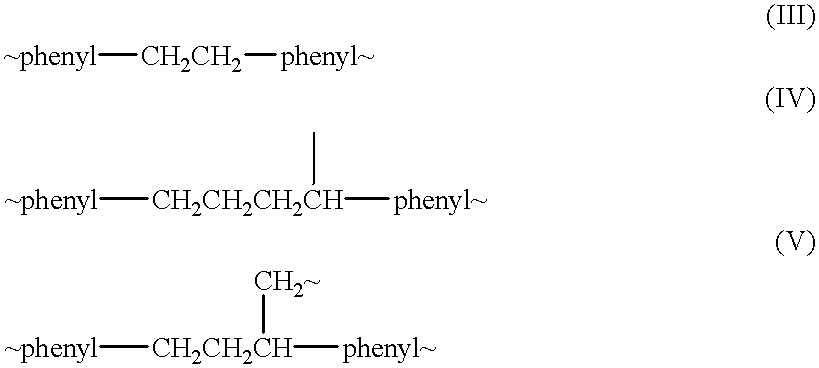High surface area adsorbents and method of preparation
a technology of adsorbents and high surface area, which is applied in the field of macroroporous polymer adsorbents and preparation methods, can solve the problems of material with undesirable swelling properties and groups representing potential sites of undesirable chemical reactivity, and achieve excellent physical stability, low swelling characteristics, and exceptional resistance to swelling.
- Summary
- Abstract
- Description
- Claims
- Application Information
AI Technical Summary
Benefits of technology
Problems solved by technology
Method used
Image
Examples
examples 2-6
In a fashion similar to that described in Example 1, various macroporous copolymers were postcrosslinked. The compositions of the various substrate macroporous copolymers were all 80% DVB / 20% EVB and represented different samples (prepared separately); properties of the corresponding SL macroporous adsorbents (based on macroporous copolymer substrates 1 and 4) are presented in Tables 2 and 3.
example 2
us copolymer substrate=80% DVB / 20% EVB with toluene porogen, approximately 3.5-4.5 mmol / g residual vinyl groups, total porosity of 1.05 cm.sup.3 / g, mesoporosity of 0.62 cm.sup.3 / g and surface area of 851 m.sup.2 / g.
example 3
us copolymer substrate=80% DVB / 20% EVB with toluene porogen, approximately 2.5-3 mmol / g residual vinyl groups, total porosity of 1.60 cm.sup.3 / g, mesoporosity of 0.95 cm.sup.3 / g and surface area of 905 m.sup.2 / g
PUM
| Property | Measurement | Unit |
|---|---|---|
| surface area | aaaaa | aaaaa |
| surface area | aaaaa | aaaaa |
| temperature | aaaaa | aaaaa |
Abstract
Description
Claims
Application Information
 Login to View More
Login to View More - R&D
- Intellectual Property
- Life Sciences
- Materials
- Tech Scout
- Unparalleled Data Quality
- Higher Quality Content
- 60% Fewer Hallucinations
Browse by: Latest US Patents, China's latest patents, Technical Efficacy Thesaurus, Application Domain, Technology Topic, Popular Technical Reports.
© 2025 PatSnap. All rights reserved.Legal|Privacy policy|Modern Slavery Act Transparency Statement|Sitemap|About US| Contact US: help@patsnap.com


